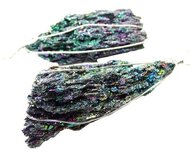Hi  I have come here to get a professional opinion I know NOTHING about geology or rocks, maybe I should have listened at school. I bought this about 12 years ago from a shop, its kind of sharp looks like a stalagmite maybe? Is that the right word? It shines multi colours when light is on it. That's all the information I have.
I have come here to get a professional opinion I know NOTHING about geology or rocks, maybe I should have listened at school. I bought this about 12 years ago from a shop, its kind of sharp looks like a stalagmite maybe? Is that the right word? It shines multi colours when light is on it. That's all the information I have.
https://postimg.org/image/5ml8e1hux/

Cheers!!!!!!




 I have come here to get a professional opinion I know NOTHING about geology or rocks, maybe I should have listened at school. I bought this about 12 years ago from a shop, its kind of sharp looks like a stalagmite maybe? Is that the right word? It shines multi colours when light is on it. That's all the information I have.
I have come here to get a professional opinion I know NOTHING about geology or rocks, maybe I should have listened at school. I bought this about 12 years ago from a shop, its kind of sharp looks like a stalagmite maybe? Is that the right word? It shines multi colours when light is on it. That's all the information I have.https://postimg.org/image/5ml8e1hux/

Cheers!!!!!!










